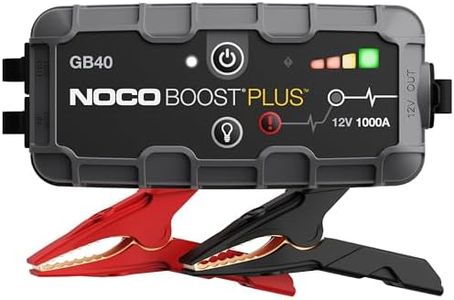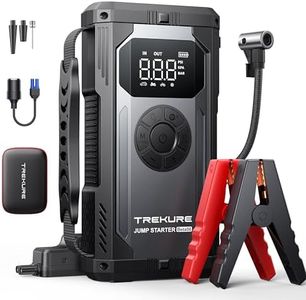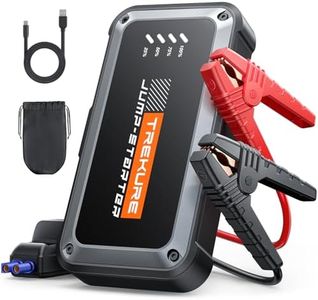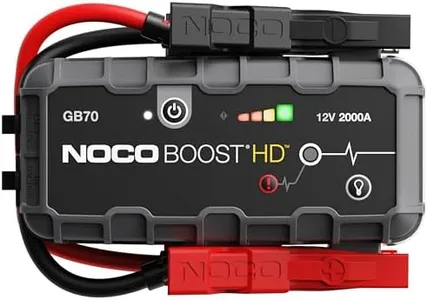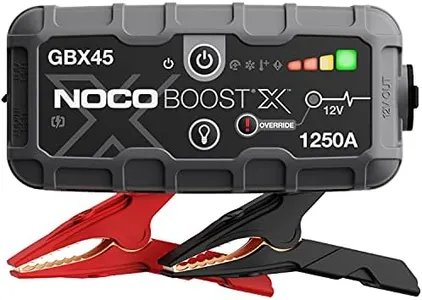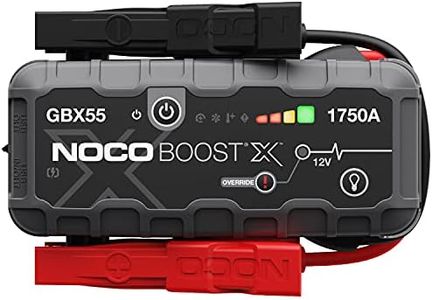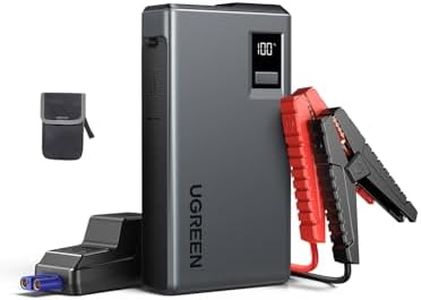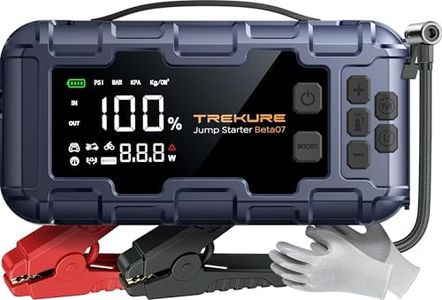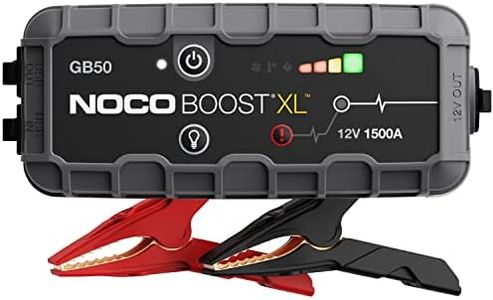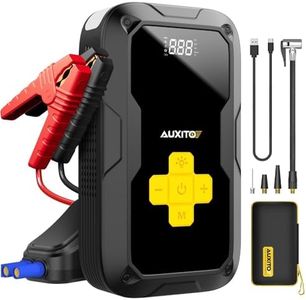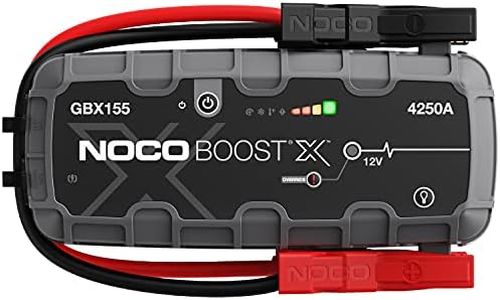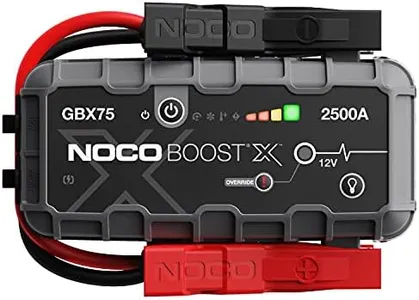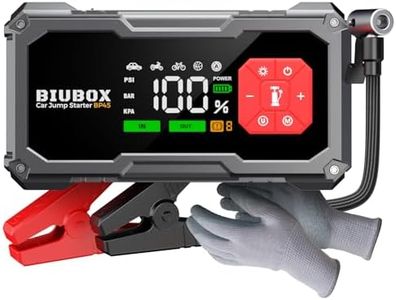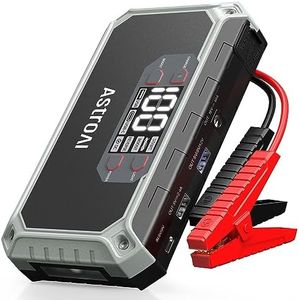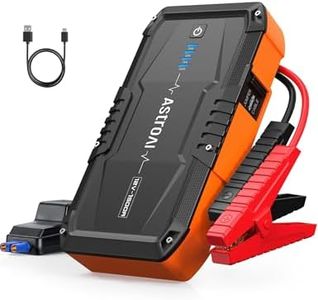We Use CookiesWe use cookies to enhance the security, performance,
functionality and for analytical and promotional activities. By continuing to browse this site you
are agreeing to our privacy policy
10 Best Lithium Jump Starters
From leading brands and best sellers available on the web.Buying Guide for the Best Lithium Jump Starters
Choosing the right lithium jump starter is important to ensure you're prepared for emergencies and can get your vehicle running when the battery dies. These devices are compact and powerful, offering a safe and easy way to jump-start a car without needing another vehicle. Before you buy, consider how you'll use the device, the size of your vehicle, and the extra features you might need, like charging other electronics or lighting.Peak AmpsPeak amps refer to the maximum current the jump starter can deliver in a short burst to start your vehicle's engine. This is crucial because different car engines require different amounts of power to start, especially when the battery is fully dead. Smaller cars, motorcycles, or ATVs typically only need lower peak amps, while larger vehicles like trucks and SUVs require higher values. Generally, devices range from around 400 to over 2000 peak amps. To choose, check your vehicle's engine size: compact cars can usually use 400–600 amps, mid-size sedans benefit from 600–1000 amps, and large SUVs or trucks should have devices offering 1000 amps or more. Pick a jump starter that matches or slightly exceeds your vehicle's needs for reliable performance.
Battery Capacity (mAh)Battery capacity, measured in milliamp-hours (mAh), tells you how much energy the jump starter can store. This is important because higher capacity lets you jump-start more times before needing a recharge, and may also allow you to charge phones or other devices multiple times. Small-capacity units, around 8000–10000 mAh, are good for emergency car starts and occasional phone charging. Mid-range, about 12000–20000 mAh, suit people who want more jumps between charges or want to power devices often. High capacity, 20000 mAh and above, is helpful for frequent use or larger vehicles, or as a backup power supply for longer trips. Think about how often you might use it and if you'll charge other gadgets, and pick a capacity that fits your lifestyle.
Supported Engine TypesDifferent jump starters are rated for various types and sizes of engines, such as gas or diesel, and by engine displacement in liters (like 4L gas or 3L diesel). This is important because diesel engines generally need more power to start than gas engines. Check your vehicle's engine type and size (you can find this in your owner's manual or under the hood), then ensure the jump starter you select is rated to handle those specs. For example, a jump starter rated for up to 6L gas and 3L diesel engines would be suitable for the wide majority of family vehicles, but if you have a big diesel truck or van, you'd need one with higher ratings.
Safety FeaturesSafety features help prevent accidents like sparks, reversed connections, overcharging, or overheating while using the jump starter. Look for built-in safeguards such as reverse polarity protection, overcurrent protection, short-circuit prevention, and spark-proof technology. These features are especially important for those new to using jump starters and give peace of mind by making the device much safer and easier to use. If you’re not mechanically inclined or just want added security, prioritize models with a comprehensive set of these safety features.
Size and PortabilitySize and portability determine how easy it is to store and carry your jump starter. Compact, lightweight models fit neatly under a car seat or in a glove box, making them ideal for regular drivers who want a device on hand for emergencies. Heavier, larger units might offer more power but are better for those with spacious vehicles or those who may use the device for multiple vehicles or in more rugged, off-grid situations. Consider where you plan to store the jump starter and if you'll want to carry it between vehicles or on trips.
Extra FeaturesMany lithium jump starters come with extra features like built-in flashlights, USB charging ports, air compressors, or LCD screens for battery status. These can be helpful if you travel at night, need to keep gadgets charged, or want to take care of minor tire inflation. Ask yourself which extras would make your life easier or more comfortable during roadside emergencies, and pick a jump starter that includes the most useful features for your needs.
Charging MethodsLithium jump starters can often be recharged via wall outlets, car cigarette lighter sockets, or even USB-C inputs. This matters because different charging methods affect convenience, especially if you'll be using the device often or while traveling. If you take long trips, the ability to recharge through your car can be a big plus, while at home, a standard wall outlet is typically fine. Pick a model that matches where and how you plan to charge your jump starter most often.
